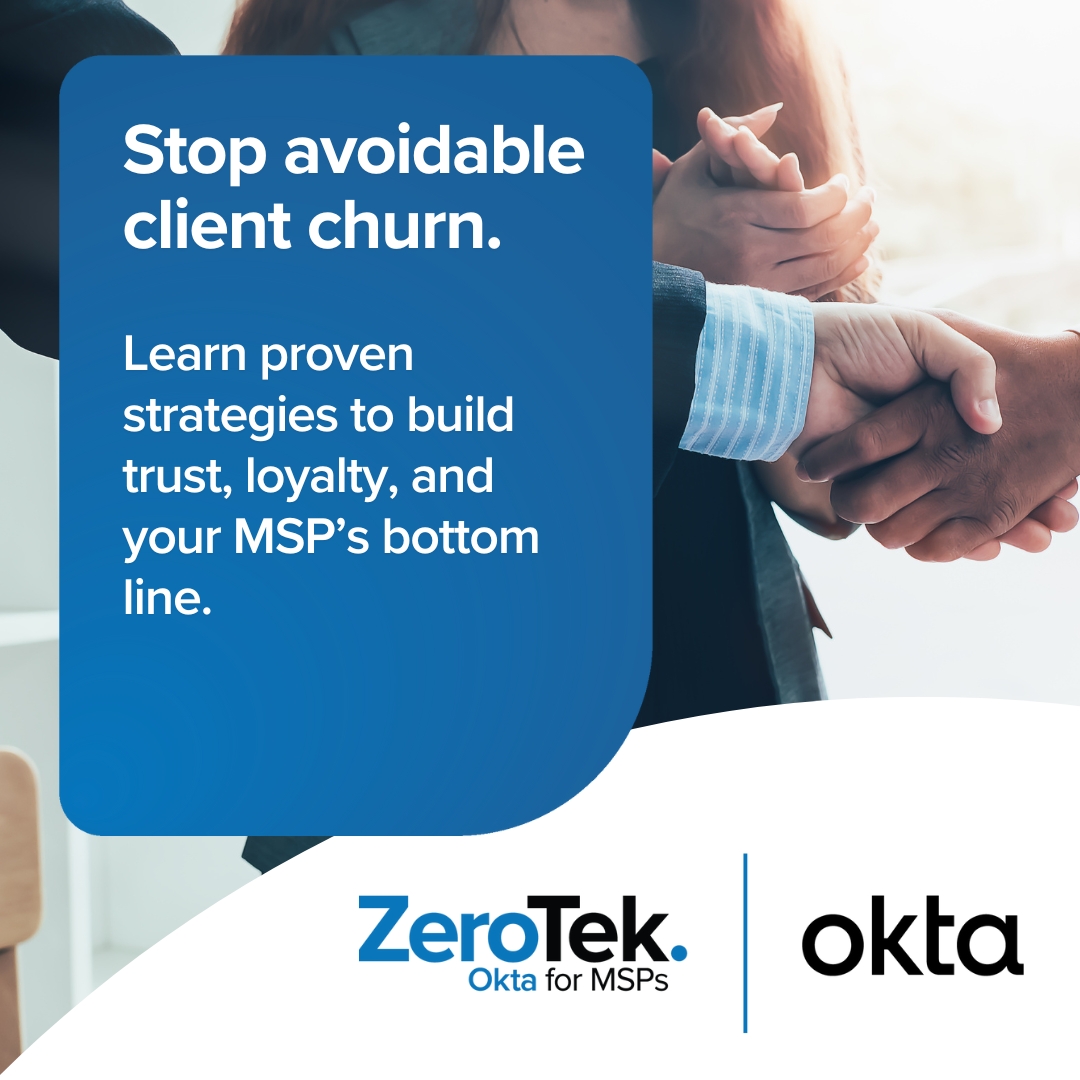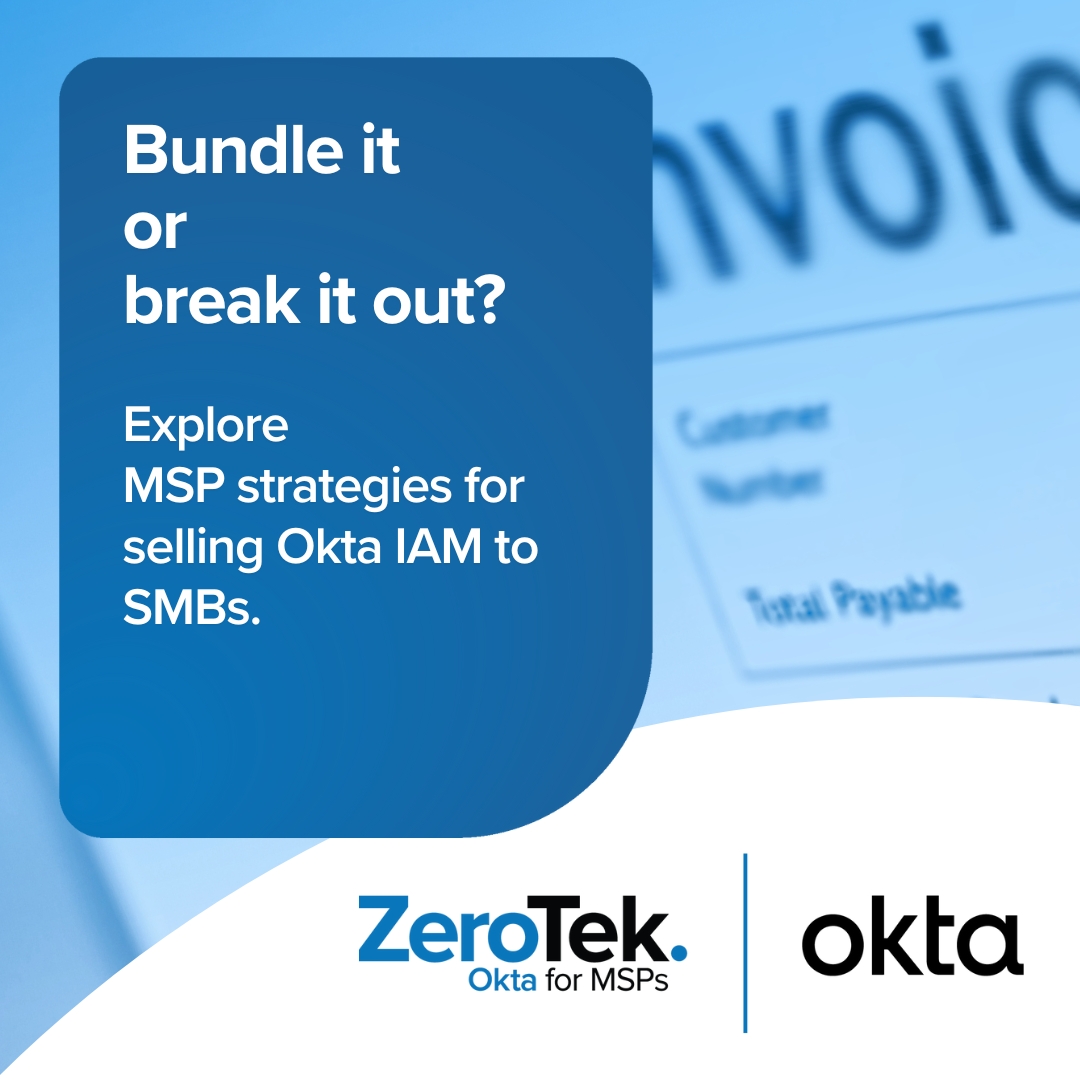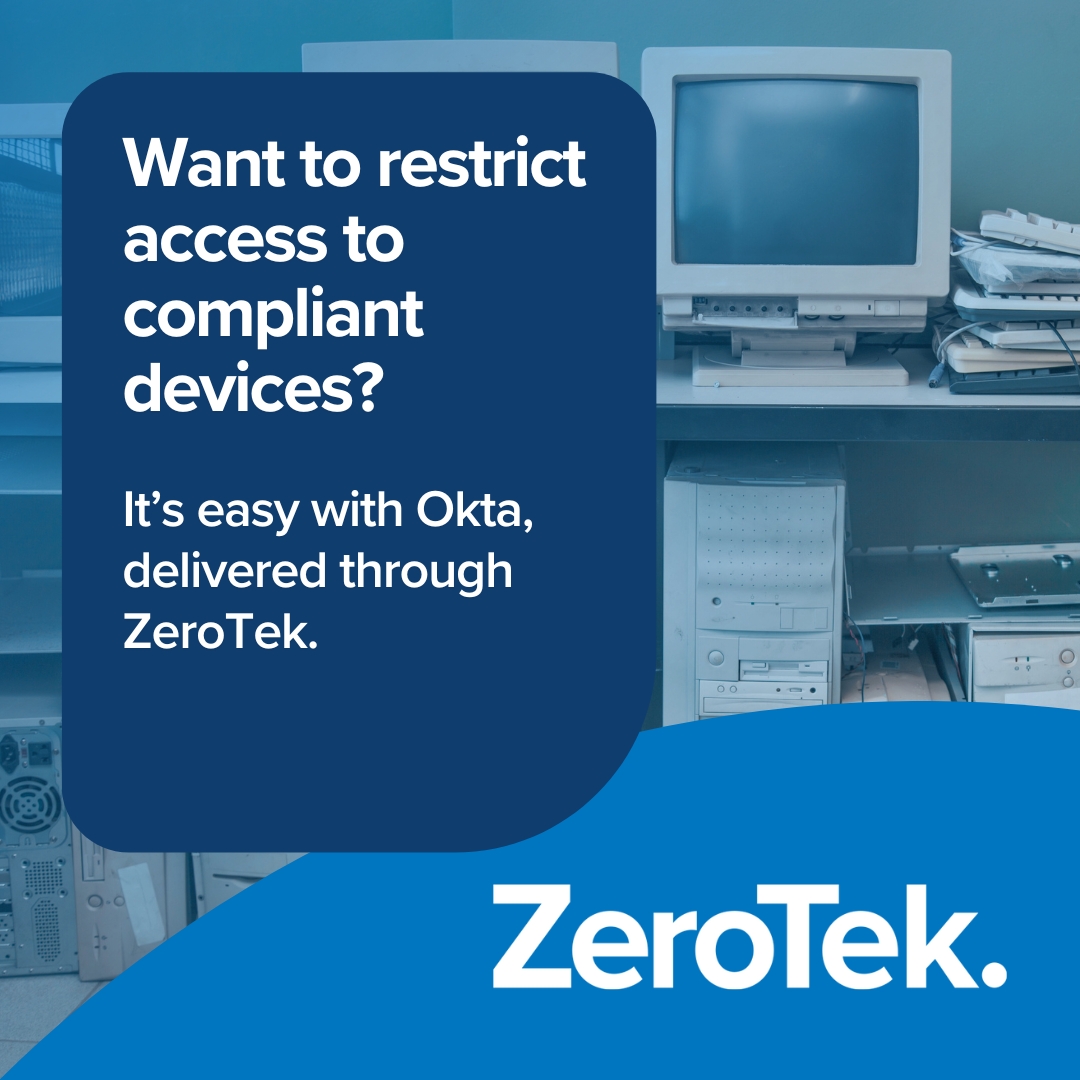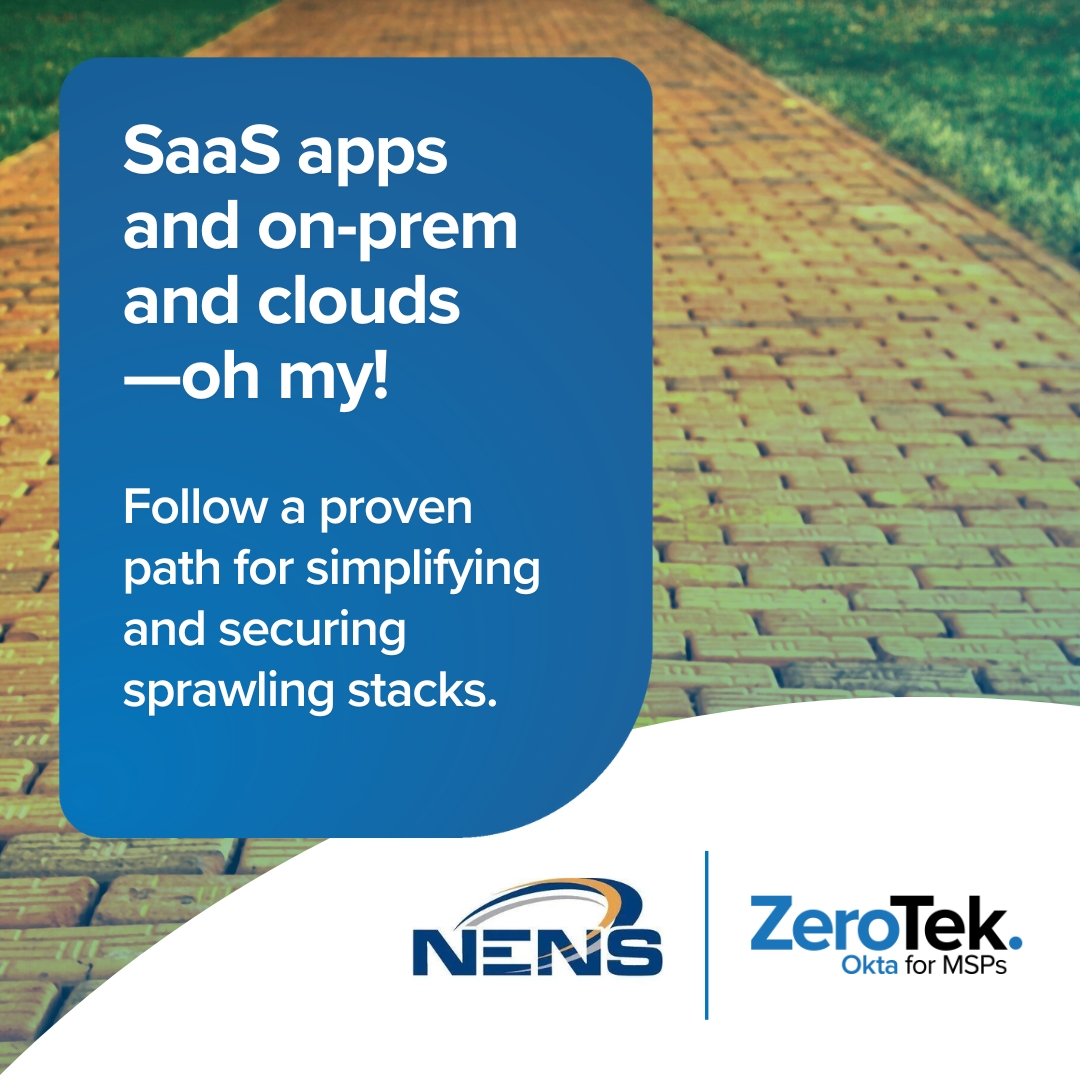Key Takeaways
- Make retention a growth priority. It’s cheaper to keep clients than win new ones—build retention into your core strategy.
- Communicate proactively. Regular check-ins and feedback loops build trust and reduce churn.
- Be a strategic partner. Go beyond IT support by offering business-aligned guidance and resources.
- Turn loyalty into growth. Ask satisfied clients to provide referrals and testimonials.
- Use IAM as a value driver. Essential security tools like IAM help prove your value and build long-term trust.
Key Takeaways
- Make retention a growth priority. It’s cheaper to keep clients than win new ones—build retention into your core strategy.
- Communicate proactively. Regular check-ins and feedback loops build trust and reduce churn.
- Be a strategic partner. Go beyond IT support by offering business-aligned guidance and resources.
- Turn loyalty into growth. Ask satisfied clients to provide referrals and testimonials.
- Use IAM as a value driver. Essential security tools like IAM help prove your value and build long-term trust.
Going beyond technical support
You’ve probably heard the claim: retaining a customer costs anywhere from five to 25 times less than acquiring a new one. While this stat is frequently quoted, few realize it originates from a 2003 analysis of the banking sector—hardly a one-to-one comparison for today’s Managed Service Providers (MSPs) concerned with building long-term loyalty through effective customer retention strategies.
But you don’t need to spend hours looking for credible, industry-specific studies on customer acquisition costs (CAC) to know whether you have a problem, because these costs vary significantly depending on your company’s sales and marketing. Instead, you’ll find your answer in some simple math.
As Ashley Cummings correctly points out in her 2023 article on customer retention: “Customer acquisition cost is the cost of sales plus the cost of marketing divided by new customers acquired. That’s it.” In the context of your known client churn, the result will indicate if it’s time to pay serious attention to your MSP’s retention strategies.
In this article, we’ll explore several strategies MSPs operate less as reactive technical support and more as proactive, strategic partners for their customers. We’ll look at some of the core reasons clients churn, how to strengthen engagement through better communication, and actionable ways to turn satisfied customers into enthusiastic advocates. We’ll also highlight how tools like identity and access management (IAM) can play a key role in seamless, security-driven client retention strategies for MSPs.
Why do clients churn?
Put simply, clients leave when businesses fail to meet their expectations. Many MSPs assume that strong performance indicators, like high uptime, low disruption rates, or zero data breaches, are enough to guarantee loyalty. While these are impressive statistics, they won’t have an impact on client relationships if not communicated properly. In reality, what keeps clients around is the relationship you build and the trust you earn through proactive communication.
To establish yourself as a trusted advisor—not just a service provider—you must prove that you’re the right partner to help SMBs achieve their goals. That means:
- Staying ahead of the curve by continuously developing your technical expertise and offering proactive, strategic guidance.
- Demonstrating 24/7 vigilance, with strong monitoring, preventative practices, and fast incident response.
- Adapting as your clients grow, by showing flexibility and offering scalable, customizable solutions that evolve with their needs.
- Delivering tangible value through clear reporting, data-driven insights, and ongoing transparency.
- Being their cybersecurity champion, by offering not just tools but expert guidance that strengthens their security posture.
There’s a saying often attributed to leadership expert Simon Sinek: “Performance earns attention, but trust earns retention.” Regardless of its origin, the message rings true—long-term loyalty comes from positioning yourself as a trusted strategic partner, not just a service provider.
How poor client retention erodes MSP profitability
Client churn directly cuts into your profitability and burdens your business several ways:
Decreased MRR
Monthly recurring revenue (MRR) forms the financial backbone of every MSP business, and customer churn chips away at that foundation. It creates a profitability gap that’s expensive to fill—both in time and resources. For every client that walks away, your team must invest time in sales outreach, proposals, and onboarding just to get back to where you started. This cost of replacement can quickly add up and sap momentum from all your other efforts to grow your business.
Reactive sales cycle
When your company faces recurring client churn, your team spends more time in the sales cycle rather than nurturing current clients. Sales and account teams are forced into constant acquisition mode rather than focusing on expansion opportunities with current customers. Each lost client also requires offboarding, decommissioning, and data transfer processes, all of which consume technician time that could be used more strategically.
Impacted Customer Lifetime Value (CLV)
The long-term financial health of an MSP also hinges on customer lifetime value (CLV). Investors and prospective buyers look closely at churn-adjusted growth. If you’re planning for acquisition or aiming to scale funding, low churn is one of the most critical metrics you can show. Retained customers mean consistent MRR, higher upsell potential, and proof that you’re delivering ongoing value. Simply put, client retention isn’t just a support function—it’s a business strategy.
MSP customer retention strategies
Communication gaps often lead to client frustration—and eventual churn. Building a structure for proactive, transparent communication pays major dividends. Here’s how to do it:
1. Initiate outreach
Your clients shouldn’t hear from you only when something breaks. Regular outreach shows you’re invested in their success. Try implementing:
- Monthly check-in emails or quarterly phone calls: Make this as easy as possible for your clients while still being proactive.
- Service update newsletters that explain what you’re doing behind the scenes: This shows your client you’re dedicated to continuous growth.
- Alerts about potential risks or improvements—even when the client hasn’t asked: A client that feels like they are “in the loop” will feel more connected to your company.
2. Strategy sessions and resources
Want to be more than “the IT team”? A client partnership is the strongest relationship you can form. Make your MSP a partner rather than just an IT vendor by actively promoting strategies to make your client’s business grow. Help clients think strategically:
- Run quarterly business reviews (QBRs) to align your support with their business goals.
- Regularly create new custom processes and solutions to streamline operations or boost security based on conversations during your monthly check-ins.
- Deliver custom resources—like compliance checklists or productivity guides—that offer value outside of direct interaction.
3. Close the feedback loop
Your clients already tell you what they care about. Show them you’re listening:
- In addition to recurring check-ins, send out annual or quarterly CSAT (customer satisfaction) surveys to gauge customer satisfaction.
- After every CSAT or client comment, tag common pain points (such as “slow response”).
- Hold a monthly internal review of feedback trends. Pick one to two client-facing issues to fix.
- Send a “You Said, We Did” quarterly email highlighting what you changed based on feedback.
A simple quarterly email explaining how you’ve responded to client feedback can do more to build trust than any ad campaign.
Turning MSP client retention into revenue
Once a strong relationship is in place, retention efforts can evolve into a structured client success program. This is where true growth potential lies. Happy clients don’t just stay—they advocate, refer, and help you expand.
Create a customer journey that integrates a customer success program to not only improve client retention, but drive upsells and generate referrals:
- Identify your promoters: Use annual or quarterly CSAT/NPS (net promoter score) surveys to find your 8–10 top promoters. These are clients who trust you deeply and are most likely to refer you to others.
- Make referrals as easy as possible: Don’t expect clients to sell for you. Equip them with easy-to-use referral materials: A branded referrals page, suggested blurbs for LinkedIn, or simple email templates to forward. (Remember to check local spam laws first. Unsubscribe options may be required for non-essential emails.)
- Reward and recognize: Recognition and rewards should feel personal and authentic. A coffee subscription, donation to a nonprofit in their name, or a simple handwritten thank-you note can reinforce the relationship.
- Share success stories: Use QBRs and regular meetings to uncover and highlight your customer’s wins. With permission, turn these into website testimonials, case studies, or LinkedIn success posts to use loyalty as a marketing tool.
Leverage IAM and security services as retention tools
Your customers rely on you for assurance and protection against the growing threat of identity-based attacks. That’s why MSPs who deliver strong security, build great customer relationships, and clearly communicate their value are the ones who retain clients and earn more referrals.
IAM is no longer an optional upsell; it’s now essential to protect your clients as attacks increasingly target digital identities. But beyond security, IAM plays a strategic role in client retention.
Start by choosing an IAM platform that delivers both a reliable customer experience and strong security—something you can confidently stand behind. Our IAM Evaluation Checklist for MSPs is a great place to begin.
When you offer services that truly work and provide real value, you earn trust and long-term loyalty. As Nicholas Thomas, Founder and Principal Consultant at Ethikos put it:
“I want for my customers what I want for myself—to stay with vendors and solutions because they see the value, not because they’re locked in. It makes ZeroTek | Okta a good match. Once they have Okta, they love it.” (Read more about how Ethikos uses ZeroTek | Okta to grow.)
Once you’ve implemented a reliable IAM solution, use your QBRs to reinforce the value you deliver. If you’re deploying and managing Okta IAM with ZeroTek, the ZeroTek Log Viewer makes it easy to collect meaningful metrics—just filter and export log events by type.
Use this data to show how many malicious access attempts were blocked through geofencing, Okta security policies, and Okta ThreatInsight. These insights let you frame your value in terms that resonate with clients: risk reduction and business continuity.
By consistently delivering secure, personalized service—and communicating that value clearly—you turn IAM into a powerful driver of customer loyalty.
Ready to find and fix hidden churn risks? Use our free MSP Client Retention Scorecard below to evaluate your client relationships across service, security, and strategy.
The MSP Client Retention Scorecard
By assessing key customer-satisfaction factors, MSPs can flag accounts that may be slipping and take corrective action. Every quarter, account managers complete this scorecard to highlight healthy, at-risk, or critical clients. Use results to build your game plan for the next quarter: maintain healthy clients, nurture at-risk clients, and save critical clients by focusing on the sections with your lowest scores.
Communication & Responsiveness (25 points)
___ Average response time to tickets: <2 hrs (10), 2–4 hrs (7), 4–8 hrs (5), >8 hrs (2)
___ Customer satisfaction with communication frequency: 1–5 scale
___ Number of proactive check-ins this quarter: 3+ = 5 points, 1–2 = 3 points, 0 = 0 points
___ Using customer’s preferred communication method: Y/N (5/0)
Total points: ____
Service Delivery & Value (30 points)
___ SLA adherence rate: 99–100% (10), 95–98% (7), 90–94% (5), <90% (2)
___ Number of unplanned outages: 0 (5), 1 (3), 2+ (0)
___ Customer understands services they’re paying for: Y/N (10/0)
___ Evidence customer sees ROI from our services: Y/N (5/0)
Total points: ____
Relationship Strength (25 points)
___ Face-to-face interactions this quarter: 3+ (5), 2 (3), 0 (0)
___ Know customer’s business goals/challenges: Y/N (10/0)
___ Have contacts beyond IT department: Y/N (5/0)
___ Customer has mentioned our competitors: Y/N (0/5)
Total points: ____
Security & Compliance (20 points)
___ IAM/security incidents this quarter: 0 (5), 1 (3), 2+ (0)
___ Customer compliance requirements documented: Y/N (5/0)
___ Security training provided to customer: Y/N (5/0)
___ Customer sees us as security advisor: Y/N (5/0)
Total points: ____
CUSTOMER SATISFACTION SCORE (add all totals): _______
Scoring
80+ = Healthy, 60–79 = At Risk, <60 = Critical
Are you ready?
Ready to explore how ZeroTek | Okta can help your MSP deliver next-level security services to your customers?





